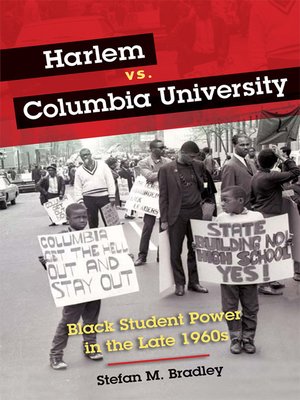
Sign up to save your library
With an OverDrive account, you can save your favorite libraries for at-a-glance information about availability. Find out more about OverDrive accounts.
Find this title in Libby, the library reading app by OverDrive.



Search for a digital library with this title
Title found at these libraries:
| Library Name | Distance |
|---|---|
| Loading... |
In 1968–69, Columbia University became the site for a collision of American social movements. Black Power, student power, antiwar, New Left, and Civil Rights movements all clashed with local and state politics when an alliance of black students and residents of Harlem and Morningside Heights openly protested the school's ill-conceived plan to build a large, private gymnasium in the small green park that separates the elite university from Harlem. Railing against the university's expansion policy, protesters occupied administration buildings and met violent opposition from both fellow students and the police. In this dynamic book, Stefan M. Bradley describes the impact of Black Power ideology on the Students' Afro-American Society (SAS) at Columbia. While white students—led by Mark Rudd and Students for a Democratic Society (SDS)—sought to radicalize the student body and restructure the university, black students focused on stopping the construction of the gym in Morningside Park. Through separate, militant action, black students and the black community stood up to the power of an Ivy League institution and stopped it from trampling over its relatively poor and powerless neighbors. Comparing the events at Columbia with similar events at Harvard, Cornell, Yale, and the University of Pennsylvania, Bradley locates this dramatic story within the context of the Black Power movement and the heightened youth activism of the 1960s. Harnessing the Civil Rights movement's spirit of civil disobedience and the Black Power movement's rhetoric and methodology, African American students were able to establish an identity for themselves on campus while representing the surrounding black community of Harlem. In doing so, Columbia's black students influenced their white peers on campus, re-energized the community's protest efforts, and eventually forced the university to share its power.|
Table of Contents
Prologue
Introduction
1. Why I Hate You
2. Gym Crow
3. Up against the Wall
4. On Our Own
5. Supporting the Cause 6. Black Student Power 7. Striking Similarities
8. Is It Over Yet
Conclusion
Epilogue
Bibliography
|
"A valuable scholarly contribution chronicling one of the most tumultuous periods in America's racial history."—The Journal of Blacks in Higher Education
"A valuable and long overdue addition to the historiography of 1960s student protest."—Labour/Le Travail
|Stefan M. Bradley is an assistant professor of history and African American studies at Saint Louis University.
"A valuable and long overdue addition to the historiography of 1960s student protest."—Labour/Le Travail
|Stefan M. Bradley is an assistant professor of history and African American studies at Saint Louis University.







